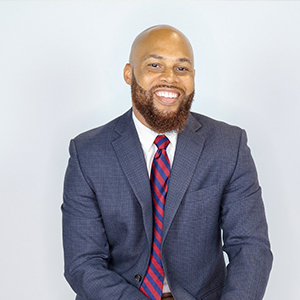Blackouts, Daily Vomiting and Headaches Helped by Chiropractic
The Journal of Upper Cervical Chiropractic Research published the results of a case study on July 3, 2023, that documented the successful chiropractic care of a patient who was suffering with blackouts, daily vomiting and headaches. Black-outs are sometimes called "drop attacks". These can be caused by many factors including a headache that surges to an extreme pain causing a loss of consciousness.
 In this case, a 23-year-old man
went to the chiropractor seeking help with a variety of
issues. The young man, a cook,
had chief complaints of headaches and back pain which had
both been present for the past 5 years. He rated his lower
back pain as a 4 out of 10, with ten being the worst. The
back pain would occasionally rise to an 8 out of 10
level.
In this case, a 23-year-old man
went to the chiropractor seeking help with a variety of
issues. The young man, a cook,
had chief complaints of headaches and back pain which had
both been present for the past 5 years. He rated his lower
back pain as a 4 out of 10, with ten being the worst. The
back pain would occasionally rise to an 8 out of 10
level.
The man described his headaches as "stabbing pain" with an average pain severity of 5 out of 10. His headaches would cause daily nausea and vomiting. However, he reported that weekly, his headaches would surge to 10 out of 10 causing him to vomit and black out.
A chiropractic examination was performed which included a postural analysis and leg length measurements, along with spinal x-rays of the man's neck. The x-rays showed that the top bone in the man's neck, known as the "atlas", was malpositioned. The determination was made the the atlas vertebrae was subluxated.
Specific forms of chiropractic care were started to correct the atlas subluxation. After the first adjustment, the man reported that he began to feel symptomatic relief. After each subsequent adjustment, he reported continued improvement.
After a month of chiropractic care, the man reported that he was no longer having blackouts and his headache frequency at that point had decreased by 2/3rds. He was no longer vomiting from his headaches and reported a 90% reduction in back pain, an 80% decrease in body pain, and a 50% decrease in dizziness at that point.
The researchers suggested that the subluxation was causing a change in cerebrospinal fluid (CSF) flow. Motion MRI studies have shown that many people who had had some sort of accident have a reduction or interuption in the normal CSF flow. According to the National Institutes of Health, "Cerebrospinal fluid (CSF, shown in blue) is made by tissue that lines the ventricles (hollow spaces) in the brain. It flows in and around the brain and spinal cord to help cushion them from injury and provide nutrients."
This study's researchers explained this case by explaining that a subluxation of the atlas can alter the flow of CSF. This alteration has been show to be linked with a variety of significant health challenges. They further explain, "...it has been demonstrated that a different patient with almost the same amount of atlas misalignment had CSF flow impairment in the posterior portion of the spinal cord, which resulted in increased intracranial pressure."
 Common
medical care for in-toe walking is watchful waiting. No care
is usually medically rendered in the anticipation that the
child will grow out of the condition in a few years. Some
more severe cases are sometimes referred to an orthopedist
for bracing. In many cases, parents choose not to just wait
and turn to alternative forms of care such as chiropractic.
Common
medical care for in-toe walking is watchful waiting. No care
is usually medically rendered in the anticipation that the
child will grow out of the condition in a few years. Some
more severe cases are sometimes referred to an orthopedist
for bracing. In many cases, parents choose not to just wait
and turn to alternative forms of care such as chiropractic.  In this case, a 30-year-old U.S.
veteran was referred by a Veterans Health Administration (VHA)
physical medicine and rehabilitation physician to a VHA
chiropractic clinic for neck pain and upper back tension. His
history revealed that ten years ago, he began suffering with neck
pain and hand weakness that limited his ability to complete his
service duties. His condition got worse over the next two years
until he finally had to be medically discharged from military. A
neurosurgeon determined that the man was not a candidate for
surgery and recommended conservative care. For the next eight
years the veteranís care consisted of physical medicine, a
rehabilitation physician, psychologists, and occupational
therapists.
In this case, a 30-year-old U.S.
veteran was referred by a Veterans Health Administration (VHA)
physical medicine and rehabilitation physician to a VHA
chiropractic clinic for neck pain and upper back tension. His
history revealed that ten years ago, he began suffering with neck
pain and hand weakness that limited his ability to complete his
service duties. His condition got worse over the next two years
until he finally had to be medically discharged from military. A
neurosurgeon determined that the man was not a candidate for
surgery and recommended conservative care. For the next eight
years the veteranís care consisted of physical medicine, a
rehabilitation physician, psychologists, and occupational
therapists. In this case, a 28-year-old
woman went to a chiropractor to see if she could get help
for her infertility. She reported that she had a history of
chronic stress, a poor metabolism with weight control
issues, and difficulty sleeping which would cause
her to wake up stiff and tired. The woman owned a salon and
was having issues with anxiety, neck stiffness, shoulder
pain and lower back pain. Her medical history noted that
both her and her husband had undergone fertility testing,
but she was still unable to conceive.
In this case, a 28-year-old
woman went to a chiropractor to see if she could get help
for her infertility. She reported that she had a history of
chronic stress, a poor metabolism with weight control
issues, and difficulty sleeping which would cause
her to wake up stiff and tired. The woman owned a salon and
was having issues with anxiety, neck stiffness, shoulder
pain and lower back pain. Her medical history noted that
both her and her husband had undergone fertility testing,
but she was still unable to conceive.